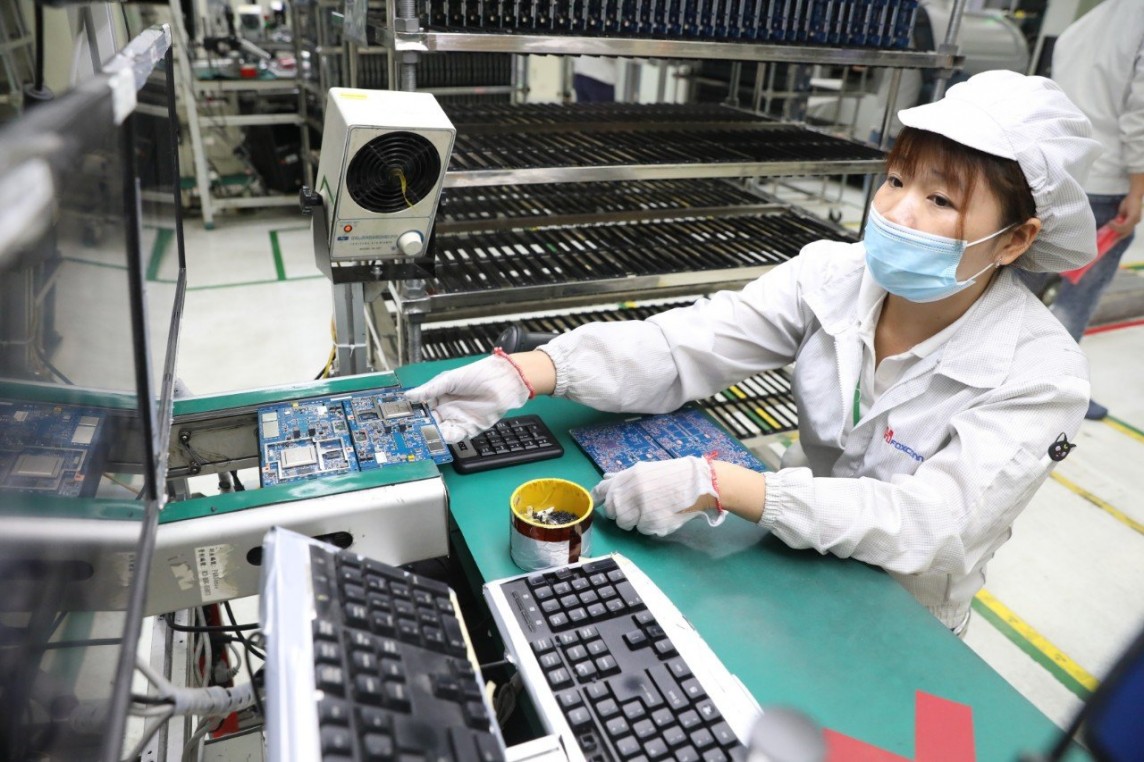Need to assess the advantage correctly
As an expert in the field of Physics and Plasma technology, Professor and Academician Nguyen Quoc Sy – Academician of the Russian Academy of Sciences, Chairman of VinIT Institute shared: The scientific foundation of the Semiconductor industry is the science of materials, solid-state physics, electronics, is a deep R&D system for semiconductors and chip design. However, during the development process, each country has its own direction and way of doing things.

Professor, Academician Nguyen Quoc Sy shares about the semiconductor industry
If you only consider technology and machining machinery, Vietnam cannot have a semiconductor industry. Nor should we be delusional, thinking that we have many strengths, great potential… and can quickly build a semiconductor industry.
In fact, there are foreign-invested enterprises investing in chip manufacturing facilities in Vietnam, but their technology, machinery, equipment, and organizational management models are brought by them. We only participate in the final stage of the production process, which is testing and packaging. In fact, there is no core technology, foundation technology, with inventions, patents as a basis to compete and go along with countries around the world in this field.
“We need to have a labor market for the semiconductor industry in particular and high-tech industries in general when building new industries such as the semiconductor industry. The training system, R&D system, and production system must be closely linked and must be specific right from the policy-making process” – Professor, Academician Nguyen Quoc Sy emphasized.
He also warned about the issue of preparing human resources for high-tech industries, including the semiconductor industry, that it cannot be trained in a general way, setting the goal of training tens or even hundreds of thousands of officials and experts, when Vietnam lacks the following factors: Teaching staff; laboratory facilities, equipment; syllabus, teaching materials… For training human resources for high-tech industries, the most important issue is quality. If the quality criteria are not met, the training will be a waste of the country’s resources and society.
Many people believe that Vietnam has potential in rare earths (ranked second in the world with a reserve of 22 million tons), so it can quickly build the semiconductor industry. Actually, it is not like that. Rare earths are raw materials for the production of many types of semiconductors, but it requires systematic investment and various technologies (which Vietnam does not have) for manufacturing and refining. The rare earth industry also greatly affects the environment. Rare earths are not a prerequisite for developing the semiconductor industry.
“The US does not have rare earths but still leads the world in the semiconductor industry. Taiwan (China) does not have rare earths, but with technological assistance from the US, it is also leading the world in producing semiconductors and processing the most advanced chip technology today.” -Professor, Academician Nguyen Quoc Sy gave an example.
In terms of the advantage of a young workforce, Vietnam only has a young workforce in terms of age, not a young workforce with deep expertise. However, according to the World Bank (WB), in 15 years, Vietnam will lose this advantage, while building the semiconductor industry, if successful, will also take 30-50 years, according to the experience of other countries.
Currently, Vietnam has about 6,000 design experts trained from institutes, schools, and corporations for many years. This number is clearly not enough to meet the market’s needs, but it also needs to be supplemented and retrained, supported and equipped with modern design programs for high-tech products with high technological content, meeting the market’s requirements, such as high-end electronic chips for phones, computers, AI systems…
The role of supporting industries is important
Building the semiconductor industry does not only involve designing or manufacturing semiconductors… but also has many other stages related to supporting industries.
Professor, Academician Nguyen Quoc Sy analyzed that the semiconductor industry, like many other high-tech industries, needs supporting industries. The supporting industry for semiconductors here must be understood as a collection of technology industries that support and participate from research, design to processing, manufacturing of semiconductor products and electronic chips.

Manufacturing electronic components at Fuhong Company – Van Trung 1 Industrial Park (Bac Giang)
The semiconductor industry is not only about producing semiconductors, wafers, and electronic chips. Even to make these products, it also requires supporting industries with extremely important products for the semiconductor industry.
Among them, we must mention precision mechanical systems, CNC systems, automatic control systems in semiconductor manufacturing chains, microelectronic fabrication systems, semiconductor cleaning systems, vapor deposition systems, flotation systems… even background creation systems, grid creation… The semiconductor industry therefore needs dozens of different supporting industries and all belong to hi-tech fields. To build the semiconductor industry, it is definitely necessary to build supporting industries.
According to Professor, Academician Nguyen Quoc Sy, in the Draft Strategy, the Semiconductor Industry Development Plan, there must be a list of supporting industries that need to be developed and built together, even a step ahead of the semiconductor industry. Otherwise, it will have to rely heavily on foreign countries.
This makes us not only lose a major source of revenue but also miss the opportunity to fully exploit the manufacturing potential of large corporations, because the supporting industry is still weak and cannot meet the production requirements of Intel and Samsung.
Enterprises wishing to participate in the supply chain for the semiconductor industry, besides technological capacity, also need to be equipped with the most sophisticated and modern machinery systems. In the near future, we cannot produce these machinery systems, so we have to import them. Despite that, Vietnam still needs to urgently develop supporting industries to be able to hold the initiative in production and technology improvement. This also requires deep cooperation with strategic partners to succeed.












